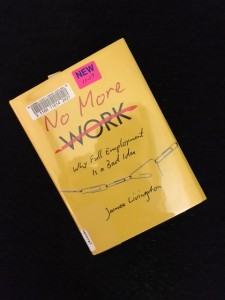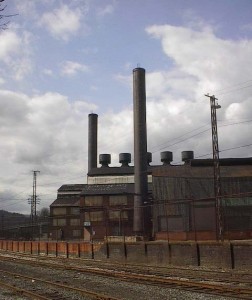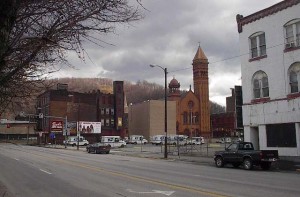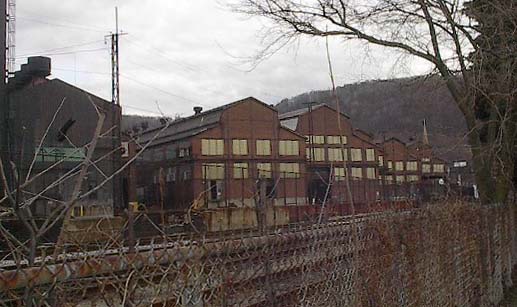“Dude! Where’s my America?”
That was a bumper sticker in the early Bush years when things seemed so out of joint to Portland hipsters. This past summer felt like déjà vu all over again as I saw campaign rallies full of red-hatted believers cheering for a candidate who seemed stunningly unqualified for the job. Stunningly inappropriate, even. What gives? Where’s my America? What don’t I understand about my America that’s nonetheless very real and can’t be ignored?
And that’s the thing – I do want to understand. So I’m looking for the insightful among us who have their eyes on this and understand its dimensions. I’ve found thought leaders in economics, social sciences, history and personal memoir who are worth a listen.

Livingston, J. (2016). No more work: Why full employment is a bad idea. Chapel Hill: University of North Carolina Press.
James Livingston is one of those. Livingston’s short book No More Work and the irreverent essay he derived from it “F—k Work!”, examine historical trends of the past 400 years in our economy, work and ethics, and draws conclusions about where we are soon headed as a society of workers looking for work. His writing is simultaneously blunt, rude, irreverent and kind as he advises us to “F—k work”, calls out Wall Street investment bankers and gangsters, and urges us to find economic and employment solutions via the golden rule – “if we want to survive, we have to love each other, as ourselves – we have to be our brother’s keeper.”
His writing style is witty – if you like to find that multi-tool of the English language, the F word, scattered among economics, history, and intellectual prose then you’ll love it. He returns repeatedly to the refrain “F—k work.” It must be fun to be a student in his classes at Rutgers. But along with enjoying his style, I was disappointed at the lack of references and citations for some of his claims. I turned to the US Census Bureau, The Federal Reserve Bank of St Louis (lots of useful data there), US Bureau of Labor Statistics, and The UC Davis Center for Poverty Research to fact check some of his claims. They checked out, but I would have preferred Livingston save me the effort.
Over the course of 60 or so pages, Livingston reviews a brief history of western civilization’s attitudes towards work and the economic and cultural forces that have informed those attitudes. He starts with pre-reformation attitudes held by serfs, servants, slaves, and the rational elites that gave way to the Protestant work ethic: work re-envisioned as a pursuit that serves God’s purpose. The Christian faithful, earning God’s grace through engagement with the world via work. Livingston sweeps through attitudes toward work during the various industrial revolutions and soon arrives at our modern era.
Today most of us want to count on our work as a means of building character, engaging our freedom, finding meaning and of course, to earn enough money to live well. Livingston points out how all of this has been impacted over the course of the last hundred years as a result of mechanization and the declining rate of capital investment – “net private investment” in economist’s terms. Livingston examines the effect that the accumulation of excess profits has had in creating the “one percent”, and the effect that the changing nature of available work has had on meaning, freedom, and character building at work.
That’s where I found Livingston’s analysis most useful in understanding 2016 – he examines the deeper and more universal human needs that we seek to fulfill by going to work, along with earning enough. We count on work for character building: it’s a place to learn about self-discipline, initiative, honesty, punctuality and team work. Livingston reminds us that we tell our kids that even if it sucks, a job gives meaning, purpose and structure to our everyday lives. Or at a minimum it gets them out of bed, makes them feel responsible, and keeps them away from daytime TV.
Livingston points out that when we can see that we impact the world around us in our work, that we’re exercising our freedom. We turn toward our work to exercise this particular freedom – experiencing our potency in the world by impacting the world. Those are central ideals in our social and personal experience – freedom, meaning, potency and character, and people will work hard to protect those ideals and potentials.
So, what happens when there’s not enough meaningful work to go around? Or, perhaps worse, when what work that can be found doesn’t adequately pay the bills for a large swath of the workforce? Livingstone asks us to consider how it feels for the millions who work at “shitty jobs” when they think about Wall Street investment bankers who take home tens or even hundreds of millions of dollars. What kind of character are they building in those shitty jobs when they see the excesses of the elites who do what, exactly? Wreck the economy by selling bad collateralized debt obligations and credit default swaps? Destroy small towns and communities with unemployment and downsizing? Rain down economic terror? How do you not feel like a chump, toiling away at a meaningless job that doesn’t even pay the bills?
We have a problem on our hands. According to the US Census Bureau, in 2015 the poverty rate was 13.5%. An estimated 43.1 million Americans lived in poverty according to the official measure, and about 9.5 million of the people who spent at least 27 weeks in the labor force were poor. In 2014, 3 million of them were paid at or below the federal minimum wage of $7.25 per hour. Try being them, eh? According to Columbia University’s National Center for Children in Poverty (NCCP), in 2014, 44 percent of children under age 18 (31.4 million) lived in low-income households and 21 percent lived in poor families (15.4 million). 49.5 percent of Americans currently receives some form of government transfer payments in order to live. Staying alive? That’s it? Livingston points out that millions of Americans can’t count on work as a place to find meaning, purpose, freedom, and build character. They can’t find work or they piece together multiple minimum wage jobs hoping to get by. As Livingston puts it, “Welcome to Wallmart, where food stamps are a benefit.”
Livingston’s analysis of job scarcity and meaning rings true to me. I was born in the 1950s and I grew up in a small town that lost its manufacturing base in the 70s and 80s. My father and his brother worked in a steel mill; my grandfather and his brothers worked in coal mines. Most of my friend’s fathers were similarly employed. When their work abruptly disappeared, the unemployment rate remained ridiculously high for years. The downtown area came to resemble a ghost town. Men who had done skilled labor in jobs like say, welding, couldn’t find skilled work and eventually settled for what they could find – unskilled work and service industry jobs. It was a painful transition.
An identity crisis has been brewing for decades among workers like these, for whom the phrase “identity crisis” sounds like a foreign language. Think about the complexities of your identity for a moment. The values and ideals that constitute character, a sense of meaning and purpose, even gender identity through work – all are constituents of identity. Which means that communities and regions where the nature of work has dramatically changed are overripe for the instabilities that come from a crisis in personal identity, regional identity, and racial identity.
Which brings me back to my initial question – “Dude! Where’s my America?” It’s been there all along, in plain sight. But I wasn’t seeing it from my west coast, comfortable bubble. Livingston spells out the changes that have been underway for the past one hundred years that have culminated in frustration and dispiritedness for millions of American workers – many of them middle aged white men. I recognize them now, and they’re actually my people, my hometown. People who are frustrated and dispirited for long enough have few choices for recourse when they’re ignored. Anger and the extreme “what have I got to lose?” approaches start to make more sense when the alternative is disempowerment and giving up. It’s almost enough to turn a longtime democratic voter into, well, an angry populist/nationalist voter.
Liberals (like me) were rightfully paying attention to the under-served, the marginalized, and minority groups that could be forgotten in “the tyranny of the majority.” (Yes, that’s a thing. Check the history books.) We saw marginalized groups suffering and their suffering engaged our compassion. But we ignored the pain of those who in the past were doing OK. A lot of liberals saw them as having dominated the show, although they never actually ran the show. Therein lays an irony – the privilege of running the show fell to a different social strata, the ones who benefited from the decline in net private investment. Middle-aged white men and women who were in the pain of identity crisis were easy to ignore. Or even, sadly, to sneer at.
Livingston brings the economic and existential plight of the rust-belt fly-over states and rural communities into focus. No More Work begins to answer my question and fills in some of my blank spots. Some, but not all.
Livingston proposes responses to these changes in work and the economy that America has shown it isn’t ready yet to consider seriously. He wants us to come to terms with the benefits of automation and mechanization -“We lost our race with the machine, but in doing so we won our freedom from the iron grip of economic necessity.” He offers the common sense suggestion that if we can’t count on work as a place to build character, then we need another context in which to develop it. And we need a means of involvement with the world that serves a similar function to address meaning and freedom. Regarding income and poverty, Livingston is a proponent of a guaranteed minimum income for all adults. If this seems like an extreme idea, he cites experiments in guaranteed minimum income run by Dick Cheney and Donald Rumsfeld when they headed Nixon’s Office of Economic Opportunity. Their findings were so encouraging that they introduced legislation to try the idea out more broadly among the working poor. It passed in the House and failed in the Senate.
Those good progressives from the 70’s – you know, Cheney and Rumsfeld? Perhaps they would have nodded in agreement with Livingston back then. “We don’t live in a nanny state,” Livingston writes. “We live in an economic system that has come to terms with its own fabulous success and has adjusted its balance appropriately.”
Does that sound like a nice (or ridiculous) liberal thing to do? You can read more about Cheney and the gang, the guaranteed income legislation that failed to pass, insights from economists like John Maynard Keynes who saw this change a-coming, along with witty advice from Livingston like “F—k work!” when (as Livingston would have it) you read the f—king book.
My take away from No More Work was about understanding the simmering forces at work in the rust belt, in rural America, and in the south that boiled over in 2016. I got a piece of that puzzle from Livingston and I have a lot of reading ahead to fill in the rest of it. Next up – I think I’ll take a journey into rural Wisconsin with Kathy Cramer. She’s been interviewing people there for the past 10 years to understand their values and politics. But more about that in a later post.
Do you have some reflections to share about this topic – work? Or, no more work? Please hit the comment button and share your thoughts. I’d love to hear from you – it’s part of my work.
Sources:
Livingston, J. (2016). No more work: Why full employment is a bad idea. Chapel Hill: University of North Carolina Press.
For fact checking, I turned to:
Keynes, J. M. (1930). Economic Possibilities for our Grandchildren. Retrieved from The Aspen Institute; https://assets.aspeninstitute.org/content/uploads/files/content/upload/Intro_Session1.pdf
UC Davis Center for Poverty Research. Research on Labor Markets and Poverty. Retrieved from http://poverty.ucdavis.edu/labor-markets-poverty, February 10, 2017.
U.S. Bureau of Economic Analysis. Net private domestic investment: Net fixed investment [A560RC1A027NBEA], retrieved from FRED, Federal Reserve Bank of St. Louis; https://fred.stlouisfed.org/series/A560RC1A027NBEA, February 10, 2017.
U.S. Bureau of Labor Statistics. CPI Detailed Report: Data for December 2016. Retrieved from https://www.bls.gov/cpi/cpid1612.pdf, February 10, 2017.
U.S. Census Bureau. Retrieved from https://www.census.gov/
Additional Reading:
Susan Faludi’s book Stiffed: The Betrayal of the American Man tells the story of the decline in labor prospects for the Post WW II working class man. Her writing is insightful and compassionate and addresses masculinity and changes in male roles after WW II.




